|
Os autores são membros do time da InnovaSpace e possuem vasta experiência profissional em medicina de aviaçāo e fisiologia aeroespacial - ensino, pesquisa e inovaçāo. 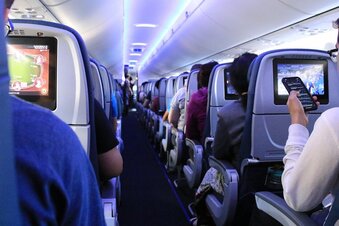 O Problema Emergências médicas durante voos comerciais de curta ou longa duração, nacionais ou internacionais, estão se tornando cada vez mais comuns. Isso se deve a fatores já conhecidos, como a expansão da indústria da aviação, a popularização dos voos comerciais e a maior diversidade do perfil do viajante, incluindo passageiros idosos, portadores de doenças crônicas ou usuários de medicações. Junta-se aqui o próprio ambiente de cabine, que impõe, por exemplo, o estresse da hipóxia hipobárica, dos disbarismos pela expansão de gases de cavidades corporais, da exposição ao ar frio e seco, a ruídos, a vibrações e a acelerações, da alteração do ciclo circadiano, da fadiga e da imobilidade. Esses fatores afetam pouco ou nada os organismos sadios, mas podem ser danosos em diferentes graus ao passageiro idoso e/ou portador de doenças crônicas. A Situação Exemplo 1 – Uma avaliação clínica ou pré-operatória - Quando o motivo de uma consulta médica é uma avaliação clínica ou pré-operatória, deve-se questionar e considerar vários aspectos durante a anamnese, o exame físico e os exames laboratoriais, para se chegar a melhor decisão clínico-cirúrgica possível, reduzindo ao máximo possíveis eventos adversos, minimizando desfechos não desejados e otimizando a segurança do paciente no voo. Assim, uma pergunta não deve faltar na anamnese - “Existe o plano de uma viagem aérea num futuro próximo?”. Para que esse questionamento, no entanto, produza um impacto positivo na tomada de decisão, é mandatório que o médico assistente detenha conhecimento sobre as condições estressantes do ambiente de cabine de uma aeronave e as condições do passageiro enfermo, objetivando discutir o planejamento de um voo seguro ou até mesmo o cancelamento ou postergação do mesmo. Exemplo 2 – Médico a bordo? – Incidentes médicos com passageiros em voos comerciais vêm se tornando mais comuns. No entanto, o ambiente de cabine e os recursos médicos disponíveis a bordo de aeronaves são quase sempre de total desconhecimento dos médicos que se tornam voluntários no atendimento a um passageiro durante um voo comercial. Sistemas de auxílio às tripulações a ao médico voluntário incluem o uso da saúde digital e da telemedicina, as quais, nem sempre estão disponíveis para orientação num incidente médico a bordo. Ainda, muitos casos poderiam ter sido evitados, se, durante a avaliação pré-voo por parte do médico clínico, especialista ou cirurgião, fosse incluído na anamnese do paciente questionamentos relativos a planos de viagens de avião. A Solução A InnovaSpace vem adovagar em favor do ensino da Medicina de Aviação e da Fisiologia Aeroespacial na formação de estudantes de faculdades de medicina, através da inserção de uma série de aulas constituindo disciplinas curriculares novas ou integrando disciplinas já existentes no currículo acadêmico. Esta iniciativa é apoiada pelas Sociedade Brasileira de Medicina Aeroespacial (SBMA) e
Sociedade Portuguesa de Medicina Aeronáutica (SMAPor) Author: Karin Brünnemann, PMP®Karin Brünnemann is PMI Slovakia’s first interplanetary project manager. Karin has more than 25 years of experience managing global strategic projects. She helps companies during phases of cultural change and digital transformation. Apart from being a PMP®, Karin is also a certified trainer for intercultural management. She is currently using her project management expertise in her work as a Flight Planner for the Austrian Space Forum’s AMADEE-20 analog Mars mission.  The Hydronaut project is an underwater habitat that started operations in 2020 and is currently the scene for analog space research. Dr. Miroslav Rozloznik, a Flight Planner for the Austrian Space Forum, conducted an underwater analog space mission in 2021 that was fully dedicated to science. The week-long mission, in which three analog astronauts participated, included a two-day underwater stay, and featured an EVA. Scientist-on-Board, Dr. Miroslav Rozloznik from Slovakia, conducted numerous experiments in the areas of physiology, microbiology, medicine, and space psychology. Dr. Rozloznik explained “Conducting underwater analog missions complements Moon or Mars simulations in land-based habitats. While we might not be able to test rovers, drones, or rock sampling procedures, the feeling in the underwater habitat is much more space-like. I felt very detached from Earth, even the support diver appeared like an alien, when he was looking into our porthole, dressed in his diving suit. The underwater habitat also offers the possibility to simulate more complex conditions like long periods of darkness, or variation in temperature and humidity. Furthermore, the ‘psychological safety net’ of being able to open the door and get help in case something happens, is not there. We can leave the habitat but will face several hours of decompression in cold water before we are back in a safe environment.” Part of the underwater experiments focused on the internal environment of the habitat, gathering data relating to air quality, temperature, humidity, and the microbiology of the habitat. Another area of research was dedicated to the medical and physiological well-being of the divers. Dr. Rozloznik tested novel diagnostic instruments, for example, a remote stethoscope that transmitted real-time heartbeat and breathing rates to a doctor located in the mission control center. Such equipment will be very useful for future space exploration and also has many applications for telemedicine on Earth. The crew also tested various biosensors, allowing for comparison and cross-link between physiological, neurophysiological, and psychological measurements. The InnovaSpace team welcome this contribution from Prof. Ganapathy and we send huge congratulations to the team at Apollo Telehealth Services on achieving ISO 13131 certification - a great achievement! Prof. Krishnan GanapathyPast President, Telemedicine Society of India & Neurological Society of India | Hon Distinguished Professor The Tamilnadu Dr MGR Medical University | Emeritus Professor, National Academy of Medical Sciences | Formerly Adjunct Professor IIT Madras & Anna University | Director Apollo Telemedicine Networking Foundation &, Apollo Tele Health Services | URL: www.kganapathy.in 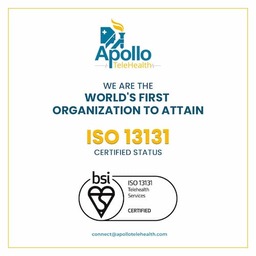 December 10th 2021 was indeed a Red letter day for Indian Telehealth. On this day the ISO 13131-2021, certification for Telehealth Services was obtained for the first time anywhere, by Apollo Telehealth Services. This brief note points out the necessity for raising the bar and setting high standards, so that the world will strive to achieve India class. For decades, Telemedicine/Telehealth services were not centre stage in the healthcare delivery system. COVID-19 changed this. The world has now accepted that the forced lockdown- enforced acceptance of Remote Health Care - will become the new normal even after the pandemic is de notified. Universal acceptance increases the responsibility of all health care providers deploying technology, to ensure constant high quality while bridging the urban-rural health divide. Quality is never an accident. It is always the result of deliberate intention, sincere effort, intelligent direction and skilful execution. Though Henry Ford opined that quality means doing it right when no one is looking, in the real world this is difficult to implement. ISO certification ensures that “Big Brother” is watching all the time. The necessity for re certification is like the Sword of Damocles hanging above us. However, it drives home the message that Quality is everyone’s responsibility at all times and not during the audit alone. One has to keep running to stay where you are. To maintain the initial global recognition, maintaining quality needs to become a habit, a unique opportunity to transform one’s DNA if necessary!! Success is the sum of small efforts, repeated day-in and day-out. Standardising systems, processes, documentation and re documentation alone will ensure providing quality remote healthcare for anyone, anytime anywhere.
International Organization for Standardization (ISO) – An OVERVIEW The, International Standards Organization, TC 215 Health Informatics Committee developed a Technical Specification, ISO/TS 13131 Telehealth services, based on a risk and quality management approach. This standard supports healthcare planning, service and workforce planning, organization responsibilities, financial and IT management. ISO was established in 1947 in Geneva, Switzerland. An Independent, non-governmental international organization it develops standards that are recognized and respected globally. It brings experts together to improve quality and provide world-class healthcare services. Experts are from 166 national standard bodies. ISO standards are developed by various advisory groups. Presently ISO has 255 technical committees, 515 subcommittees, and 2498 working bodies. Since 1947, ISO’s technical experts have created more than 18,800 standards for all possible business. ISO standards ensure that administration and product/workflow systems are carried out legally, safely and effectively. ISO technical experts have developed several assessment protocols to ensure that certified organizations apply these guidelines in their workplace. The approved protocols aid organisations to ensure that their frameworks, devices and workforce are actually in compliance with ISO standards. ISO 13131 provides recommendations on guidelines for Telehealth services deploying Information and Communication Technology (ICT) to deliver quality healthcare services. Author: Karin Brünnemann, PMP®Karin Brünnemann is PMI Slovakia’s first interplanetary project manager. Karin has more than 25 years of experience managing global strategic projects. She helps companies during phases of cultural change and digital transformation. Apart from being a PMP®, Karin is also a certified trainer for intercultural management. She is currently using her project management expertise in her work as a Flight Planner for the Austrian Space Forum’s AMADEE-20 analog Mars mission.
The AMADEE-20 analog Mars mission took place in Israel’s Negev desert during October 2021. Over the course of four weeks, an international crew of six analog astronauts conducted a number of experiments to study human behaviour and well-being; tested technical equipment, vehicles, and space suits; and deployed platforms and procedures in the areas of geoscience and life detection. A further aim of this Mars simulation was the development of a state-of-the-art Mission Support structure. I joined the AMADEE-20 team as a Flight Planner two years ago. In this role, I have been using my project management skills to help prepare and conduct scientific experiments as a member of the Mission Support team. Each experiment can be viewed as a subproject in itself and needs to be managed meticulously. 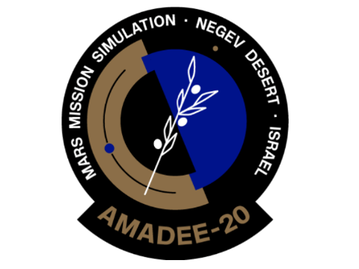 Sarah Feilmayr/OeWF (Austrian Space Forum)© Sarah Feilmayr/OeWF (Austrian Space Forum)© There are many similarities between my work as a Project Manager on Earth and my assignment as a Flight Planner for the analog Mars mission. To begin with, a Mars mission, whether simulated or real, is of course, a project. It is humanity’s most challenging, complex, risky, and expensive project. Like any other project, it can be divided into process groups. I started work on the AMADEE-20 Mars simulation during the planning process. One of my main tasks as a Flight Planner at this stage was to obtain a full and very detailed description of the experiments (subprojects) I had been assigned to. The output of these descriptions are documents comparable to a project charter. Since time “on Mars” is very limited during the mission, resources have to be assigned very carefully to the different experiments (subprojects) in order not to run into any resource conflicts. Furthermore, just like international projects on Earth, (analog) astronauts and Mission Support team members will experience cross-cultural differences and will be trained to handle them. One major difference between the projects I am normally working on, and this Mars simulation is the detail to which experiments (subprojects) have to be managed. Usually, I plan tasks for my project teams on a daily basis. For analog Mars projects, we have to plan tasks in time slots of 15 minutes. During a simulated and later real Mars mission, astronauts must wear space suits to protect themselves from the hostile environment on our neighbouring planet. As it takes a long time to put on a space suit and as they are very heavy and not comfortable to wear and work in, the time the astronauts can spend outside their habitat is very limited and therefore, very valuable and must be scheduled in great detail. Another difference is the high risk to human life and well-being, as well as to the safety of the usually very expensive equipment. Communication also poses a big challenge. The entire team has to almost learn a new language, consisting of many acronyms specific to space exploration. Simple Earth-words like “yes” and “no” are not used, since they can easily be misunderstood; we use “affirmative” and “negative” instead to express approval or disagreement.
Despite these differences, as a certified PMP® and trained analog Mars Mission Support team member, I am well prepared to take on this challenge. And as a Project Manager, I am of course, very much enjoying to expand my skills beyond Earth and to be part of creating the future of space travel and project management. If you want to learn more about this analog Mars mission, please visit https://oewf.org/en/portfolio/amadee-20/. If you want to learn more about project management for analog Mars missions, please contact me at karin@4CEE.eu or https://www.linkedin.com/in/karinbrunnemann/. InnovaSpace congratulates the hard work and dedication of Space System Engineer Marco Romero and Daniela Barbosa and their team of helpers, who dedicate their own time and resources to promoting science & technology initiatives in Angola and beyond. Well done all on your latest activity to inspire the future space generation! The Thematic Week to Celebrate Rural and Urban Development and looking at the contribution of the Education sector to sustainable development, saw the launch of 10 Editions of Space Science and Technology Comic Books, produced in Angola. “Ruvi Humbi” illustrates the life of a girl born and raised in a village in southern Angola. She dreams of reaching the stars but a conflict between the cultural and empirical knowledge of her friend Humbi and the scientific knowledge of her physics teacher makes it difficult to realize her dream of exploring the universe. “Xiamy” recounts the story of two boys who are invited to travel back in time to use the knowledge they acquired in physics and maths classes to help Punguandongo elders improve space surveillance and planetary defense techniques. “Katutu – The Space Engineer” - Young Katutu is a dreamer who goes through the phases of discovering his profession. His regular routine of life as a student and homework is interspersed with dreams in which Katutu discovers a robot with whom he learns what it is like to be a Space Systems Engineer and how he can contribute to space science and technology that changes the world. “Tropa dos Kandengues” - A group of young scientists go on a study trip to the Namibe desert, imagining its dry red landscape to be like a trip to the red planet Mars, and they apply all their knowledge acquired in classes on human and robotic exploration of the Solar System. The comic books were pre-released on November 6th, 2021 to children, educators, investors and other members of the educational system, with the ultimate aim of receiving feedback, support and contributing to the Educational community around the world. Can you help support their work in some way? Drop us a line and we can connect you! Introduction from Eija Salmi, Secretary General, Cumulus Assoc. & Thais Russomano, CEO, InnovaSpace: During the 21st century outer space has become a topic for discussion by passionate people in design universities worldwide. Some institutions have piloted initiatives and have ongoing activities in the art, design and media curriculum focused on space, considering how design can contribute to overcoming the challenges humanity will encounter when exploring this new frontier. We know for certain that living off-Earth will bring multiple challenges that require innovative solutions if we are to inhabit another planet. The field of design will be an essential element in facilitating space life, just as it is present everywhere in our lives here on Earth, whether on its own or collaboratively with other disciplines, such as medicine, engineering etc. Design education and research plays a massive role not only for the design profession, but also for business, industry and other institutional stakeholders in the space era to ensure a good, healthy and secure space future. The aim of this blog today, written by Dr Dolly Daou, is to share knowledge and inspire all of us to rise to the challenges of humanity’s tomorrow in outer space – inspired by design. This is the first in a series! Enjoy and please do share on your social media! On Planet Earth, we have been accustomed to living our lives conditioned by daily habits; we eat, sleep, cook, work, walk, build, interact according to our environments, grounded by gravity. Culturally, we differ in customs, in habits, we eat different food, we live differently, we speak different languages, however what unifies us is the relationship between our physiology and our topography. This relationship is the result of the universal gravity system and the evolution of beings and their environment on Planet Earth, the Blue Planet. The colour blue refers to the interaction of solar rays with the gases of Earth's atmosphere. Similarly, Planet Mars is known as the Red Planet in reference to the mass of red soil that covers its surface. The colour coding of both planets reflects the relationship between our biological existence and our environmental characteristics, which influence our daily habits and our survival traits on these planets.
Author: Elias de Andrade Jr.Director, Institute of Space Commerce, Austin, Texas, USA The Peoples Republic of China (PRC) is scheduled to complete its first space station in the next two years. With its Tiangong, Chinese Space Station (CSS), China has also raised many questions on how its capabilities are comparable and competitive with the International Space Station (ISS) also due to be decommissioned by 2024. The space race is on, and the CSS is a landmark of independent human flight capability that is just the beginning for China.  Photo:CMSA Photo:CMSA In the past ten years of research and development of space technology, China has enjoyed various opportunities to be a superpower in outer space. Steady economic growth rate and increase of its GPD enabling government funding are some of them. It has also developed its own national space technology with spacecraft launching capabilities, and its space activities are in accordance with the current international legal framework. On October 16, 2021, three Chinese Astronauts in the Shenzhou mission entered the Tiangong for a six month stay, its longest mission in history. China has launched 12 spacecraft, plus the Tiangong 1, and the Tiangong 2 Space Laboratory. The country has trained and sent 11 astronauts to outer space 14 times and returned them safely to Earth. The design life expectancy of the 5-module station is 10 years with possibility of extension. Prof. Krishnan GanapathyDistinguished Professor at Tamilnadu Dr MGR Medical University, India & a WHO Digital Health Expert. Past President of the Telemedicine Society of India, Neurological Society of India, and Indian Society for Stereotactic & Functional Neurosurgery. Member of the Board of Directors of Apollo Telemedicine Networking Foundation and Apollo Telehealth Services, and InnovaSpace Advisory Board member - Visit: drkganapathy.com Distance is Meaningless and Geography has become History - paraphrasing Star Trek's Captain Kirk, played by William Shatner (who just flew on a sub-orbital flight on 12th October 2021 at the age of 90 years) and going where No man has ever gone before is not the prerogative of the elite 600 plus astronauts who have left the confines of Terra Firma. In an activity that would have seemed like science fiction just a few years ago, 30 Retinal Specialists have been peering into 2800 eyes a day from a distance of 175 to 350 km, and ensuring that a digitally-signed colour-coded annotated fundus report (assisted with semi-automated diagnosis) is physically provided to each villager within 25 minutes. And this has now been happening daily for the last 43 months, in a service that the beneficiary gets totally free, thanks to a Public-Private Partnership project. An acute shortage of eye care personnel in rural India results in millions unnecessarily developing visual impairment. Early diagnosis and initiation of corrective measures remotely could be a major public health initiative, whereby the Government fills a large void by providing free, quality eye care services, including spectacles, to the community. The Andhra Pradesh Government has now been implementing the “Mukhyamantri e-Eye Kendram-MeEK (http://enethraap.phc.ind.in/) program since 1st February 2018. This tele-ophthalmology service is one of the largest Public-Private Partnership projects. In just 43 months 1.7 million patients have had their eyes checked in 115 Eye centres located in 9 districts of Andhra Pradesh, a state in southern India. A total of 1.4 million spectacles have been ordered following 1.7 million refraction checks! The operational challenges in providing “customer delight” to 2000 + people every day in so many rural centres is indeed a humongous task. Some 0.5 million fundus examinations have been performed remotely and abnormal pathology detected in 83,000 cases, including Diabetic Retinopathy, Hypertensive Retinopathy, Glaucoma and other pathologies. Continuous quality control and ensuring constant compliance and adherence to strict deliverables is in the DNA of the entire fantabulous team who continued to work even during the height of the pandemic. Obsession with perfection - where failure is not an option, making the impossible possible - these are the stuff of which astronauts and the entire extended team remotely connected with space exploration are made up of. Who knows, perhaps this project is a good recruiting ground for ISRO, ESA and NASA – after all there are a lot of similarities !!
This week we introduce our readers to an article written by social impact entrepreneur and futurist Thi Hien Nguyen, Director and Creator of SpaceConneX, featuring the Space Show, which was conceived to support the Space4Women initiative of the United Nations Office for Outer Space Affairs (UNOOSA). It is a well established fact that the world's population is aging as declining fertility rates and increased longevity lead to a growing proportion of older persons within our society. This creates many new challenges and opportunities for scientists, technologists and entrepreneurs, seeking to improve the aging experience while at the same time harnessing the new business opportunities provided by the expanding longevity industry. Click the link below to gain open access to Nguyen's article and exploration of the components of this emerging sector. Click this LINK to gain open access to “Hien's" article.
Prof. K. Ganapathy MCh (Neurosurgery), FACS, FICS, FAMS, PhDDirector Apollo Telemedicine Networking Foundation; Director, Apollo Tele Health Services; Past President, Telemedicine Society of India; Past President, Indian Society for Stereotactic & Functional Neurosurgery; Former Secretary/Past President Neurological Society of India;  I wish to thank Dr Thais Russomano for sharing with the InnovaSpace readers my article on “ Technology in Telehealth”, published in the IEEE Computer Society Region 10 newsletter. Also acknowledged is permission given by H.R. Mohan, Editor & Portfolio Member, IEEE Computer Society. The original article was for Telehealth on Terra firma ! How relevant is providing TLC ( Tender Loving Care) when the patient is 600 km above the earth and, perhaps in the future, several hundred million kms away? With failure not being an option in such an environment, both the beneficiary and the health care provider are perhaps only interested in technology per se and rightly so. Is there still a place for virtually empathising and sympathising with a patient, far away from Earth? Should we compound the already complicated milieu by taking into account the extra terrestrial patient’s wants and desires? And should the family also be involved in the decision making process or should we just leave it to an AI enabled algorithm which gives more weightage to the Microgravity environment and takes into account the lack of precedents? A media release said it all “NASA to send humans to the moon once again, – but this time we will stay“. This will also be a forerunner to the manned mission to Mars. With over 600 individuals already having gone into space in the last 55 years and space tourism having just started, extra terrestrial healthcare is now a reality. Bringing Space, down to Earth is not a pun. Representing almost 1% of global economic activity, the multiplier effect and stimulus to health and economic growth is real. There is considerable similarity between probing the emptiness of Space on distant galaxies and getting into millimetre sized capillaries in the heart and brain of the unborn – to go “ where no Man has ever gone before”. Belonging to the BC ( Before Computers - I was the last group of neurosurgeons trained in India when computers were almost non existent in a hospital ! BC is not Before Covid) era, I am Jurassic Park material and old fashioned enough to hope the super sophisticated Flight Surgeon on Earth instructing the on-board robot what to do, would still spare a few minutes and discuss with the family on Earth, the options and its limitations and advantages. Of course, we're not sure yet whether an individual space tourist / astronaut could give an Advanced Medical Directive before he leaves the Earth on a customised Informed Consent form. These ethical issues can no longer be postponed. The future is ahead of schedule. The future is yesterday not tomorrow!
|
Welcometo the InnovaSpace Knowledge Station Categories
All
|
||||||||||
UK Office: 88 Tideslea Path, London, SE280LZ
Privacy Policy I Terms & Conditions
© 2021 InnovaSpace, All Rights Reserved

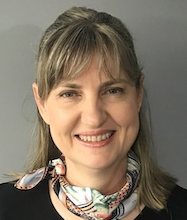
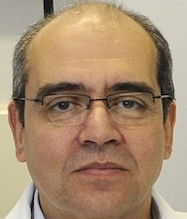
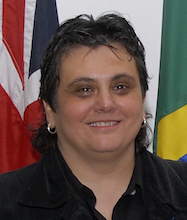

















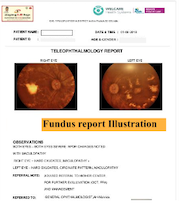


 RSS Feed
RSS Feed